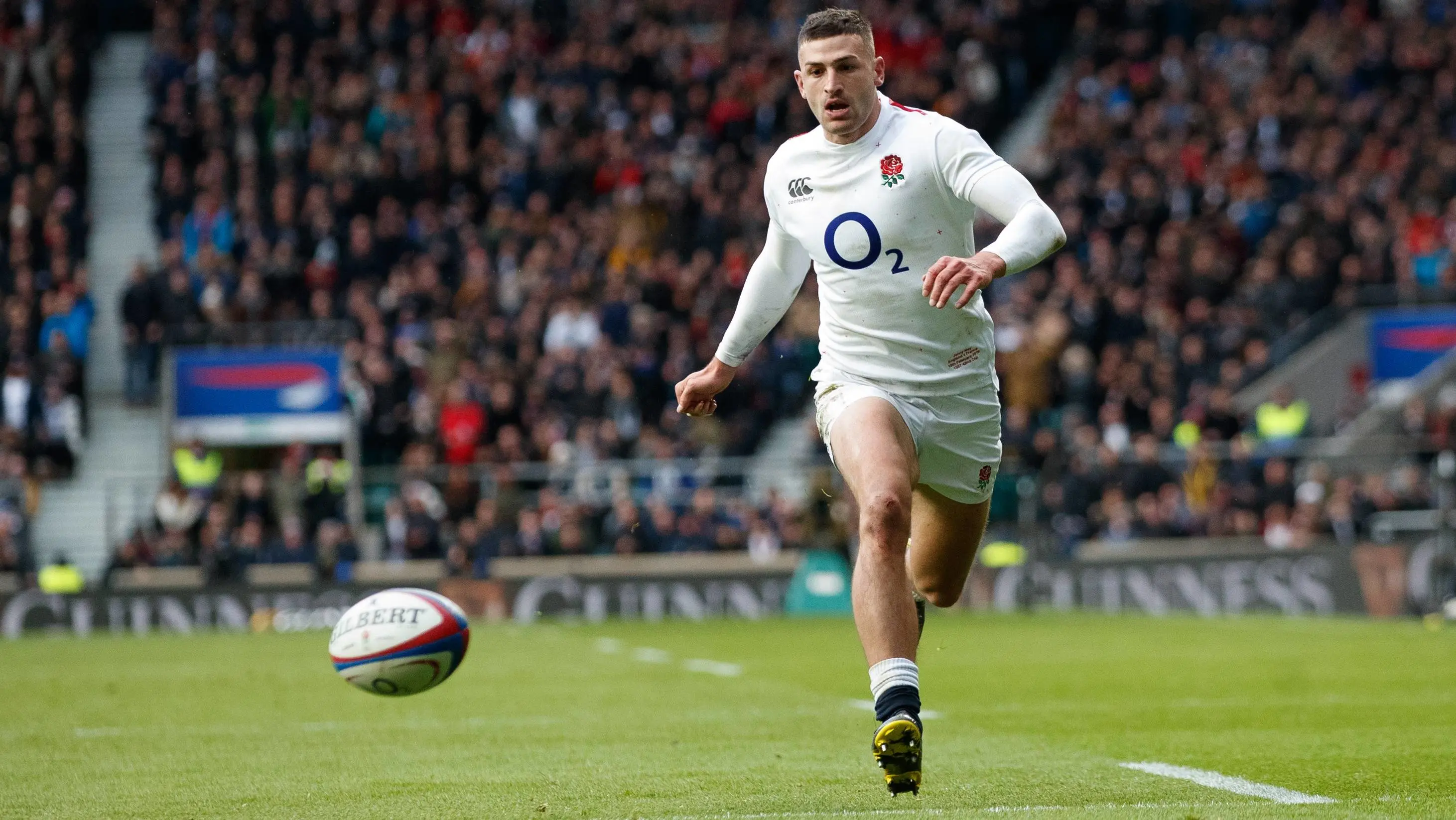England’s power up front has been a major talking point of this year’s Guinness Six Nations and dominated the conversation after their win over Ireland – but the complementary skill of their backline when putting boot to ball is equally key to their success over the opening two rounds.
Kicking into the space behind defensive lines has always been part of the game but this year, the number of scores from this ploy has reached new heights.
The broad trend in the game is that as defensive lines have become harder to breach, creative tactical kicking has developed into a vital attacking weapon.
Eleven of this year’s 34 tries have been touched down immediately after a kick and another two have been scored after a maximum of one extra phase after a kick.
It is England, though, who have made this strategy their own.
They have leapt ahead of the rest, scoring a remarkable 70 per cent of their ten tries from moves which included a tactical kick.
“As teams defend now, the space is in behind and the only way to get players in that space is to put the ball there,” remarked Eddie Jones during his post-match press conference on Sunday.
“If teams start defending in other ways, it will create space in other areas.”
His current England team have certainly exploited this and Jones’ team selection – six of this England backline are highly skilled with the boot – is proof positive that he is selecting to exploit this tactic.
Of the eight players who have started in the backline in England’s two matches, only two – Manu Tuilagi and Jack Nowell – have not put in a kick which has led to one of these seven tries.
In fact, Tuilagi is the only one of England’s backs to have not kicked the ball at all in the first two matches.
Other teams have also profited from effective kicking. Scotland’s two tries from kick assists were both created by fly-half Finn Russell. Wales fly-half Gareth Anscombe and inside-centre Hadleigh Parkes each assisted tries with kicks forward in their two matches.
And against Scotland, Ireland’s Jacob Stockdale produced something similar to his chips forward against New Zealand in November, one which this time, led to a try for Conor Murray.
But it is the range of England players producing these kick assists and their relentless use of the tactic that sets them apart from the rest.
The importance of kicking in England’s game plan is illustrated in the statistics released from the weekend’s matches – they kicked 47 times, at least 38 per cent more than any other team.
France kicked 34 times, Wales 29, Ireland 25, Italy 23 and Scotland just 19. England were also the top kickers, jointly with Ireland, on the first weekend of the Championship.
Clever tactical kicking also puts pressure on defences even when a try is not scored directly.
England’s second try against France illustrates this well.
It came from a line-out but that set-piece was forced when Elliot Daly kicked forwards from just over 40 metres out. His kick landed inside the French 22 and was collected by Damian Penaud, who was forced to within five metres of the try-line by Jonny May.
France then failed to exit the 22 from Morgan Parra’s kick and England scored five phases after the subsequent lineout.
Jonny May is a key player in England’s strategy as he is not only skilled with the boot but can also be dominant when chasing the ball down – Eddie Jones described him as “like a dog chasing a tennis ball at 100mph”.
It was just as much May’s presence which set up the situation for England’s second try against France as it was Daly’s perfectly-weighted kick.
May’s contribution to England’s performances are well-illustrated by his statistics.
Over the two matches, May has not only scored four tries and carried 19 times but has also made 18 tackles, arrived at 12 rucks and kicked four times – one of which was a direct assist for Henry Slade’s first try against Ireland.
No other back-three player has all-round numbers like this.
The Wales back three, for example, has made a total of 18 tackles between them across their two matches.
With so many England backs capable of creating opportunities with kicks, Wales will have their work cut out when they meet England in Cardiff on February 23. It will be interesting to see if they can adapt without opening up other potential areas for England to focus on.
Looking back, last year’s match between the two began with a third-minute try from Jonny May created by a kick into open space from Owen Farrell.
That try seems to have become the blueprint for England’s attack in 2019.
Hold on to the ball?
There has been much discussion of Wales’ record-equalling winning streak.
The win in Italy on Saturday was the 11th win in a row by Wales. Little mention has been made though of Wales ceding possession to the opposition in the vast majority of these matches.
The Welsh had 57 per cent possession against Italy but this was only the second time in those 11 wins in which Wales had had more of the ball than their opponents.
The only other win in this run-in which Wales had the most possession was in a 74-24 victory against Tonga in November.
Simon Gleave has been a sports data analyst for nearly 20 years – you can follow him here on Twitter.



